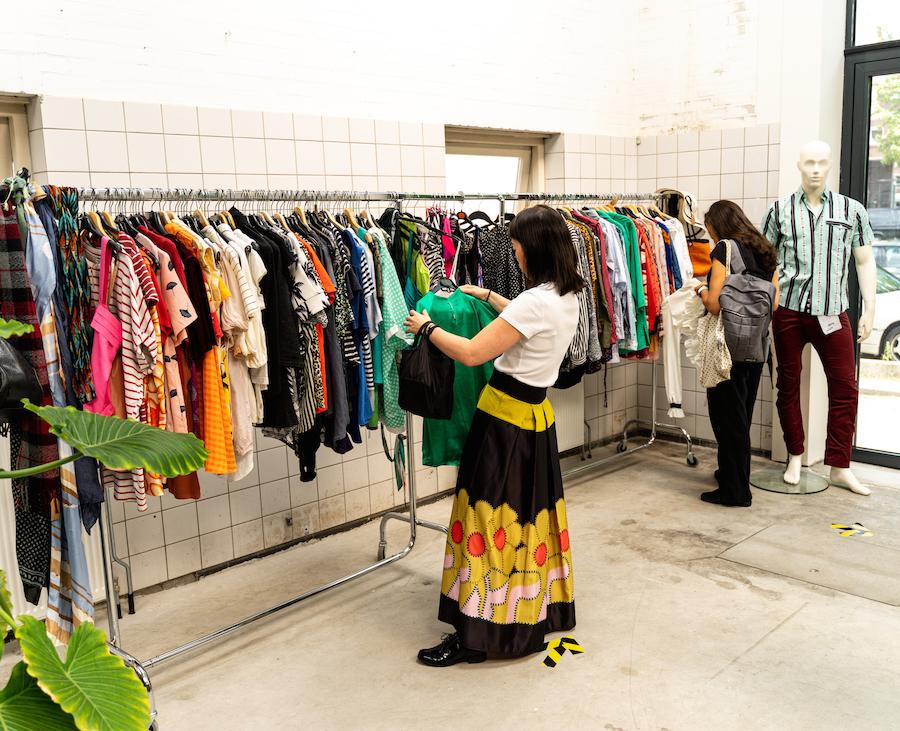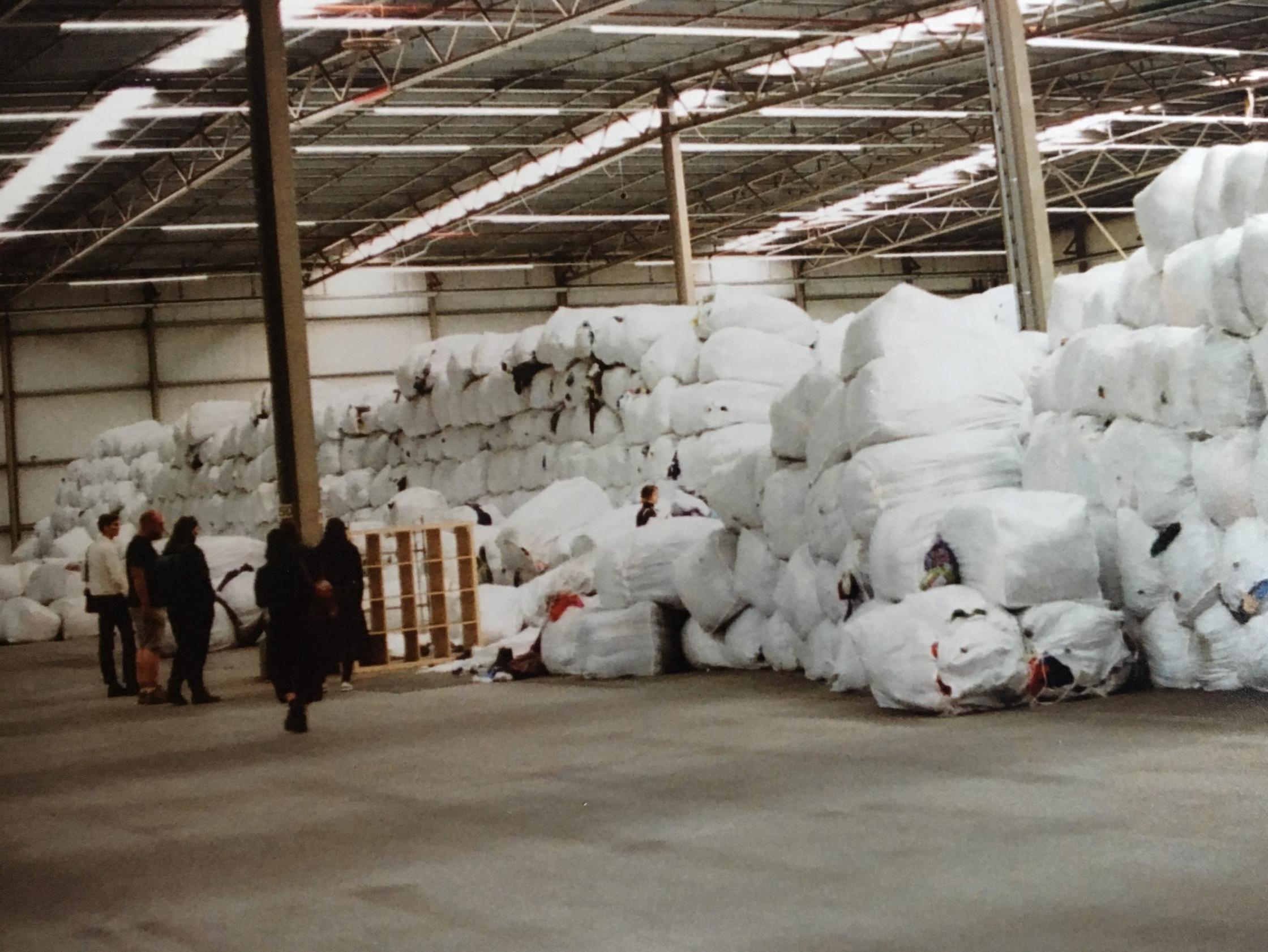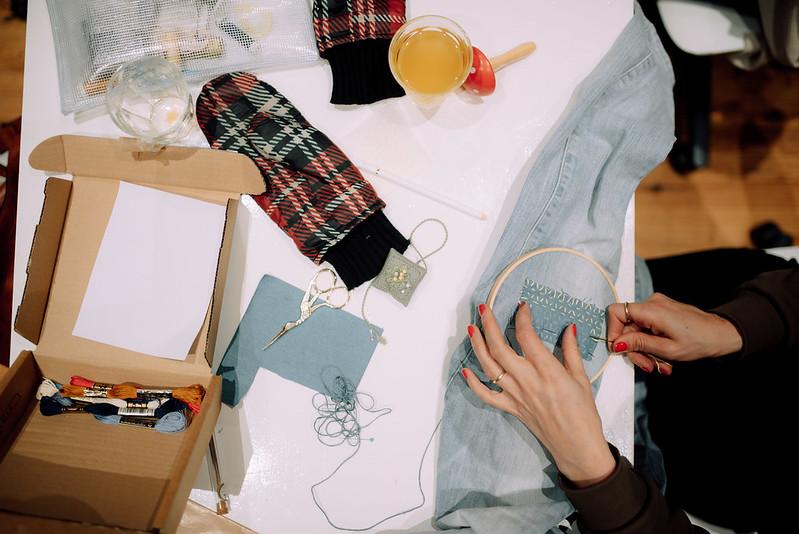Fast fashion has been an infamous problem for a while now, leading the worldwide textile consumption to increase annually at around 4 percent. We currently use over 100 million tons of textile fibers, each year! It is clear that this unbridled growth has to stop in order to reduce the ecological footprint of textiles.
Especially when you realise that a lot of clothes are made from polyester, which is just another word for plastics, made from crude oil. Cotton, on the other hand is a natural product but it is grown with the help of enormous amounts of water, fertilizers, and chemicals for crop protection.
Towards a circular (textiles) economy
For the past three years, the European project Reflow has researched the lifecycle of different kinds of resources such as textiles, food and heat. The goal was to see how the industry, citizens and municipalities can develop towards a circular economy.
The concept of the circular economy or 'doughnut economy' is coined by prof. Kate Raworth (EN). She proposes that we should stop to strive for endless economic growth and production, because this puts an untenable pressure on the earth and its inhabitants. Instead, we will have to create a safe and just space for humanity while also taking into account the planetary boundaries.

In the Amsterdam Reflow pilot, we researched the lifecycle of textiles. Together with partners Pakhuis de Zwijger, Gemeente Amsterdam, Waag and BMA Techne, we set up actions, developed methods and created new policies. Take for example the Denim Deal, that was signed by thirty parties to make the denim supply chain become greener. Fashion brands Scotch & Soda, Mud Jeans and Kuyichi pledged to create three million denim garments with at least 20 percent recycled materials.
As we come to the end of this project, it's time to share some of our learnings, since you as a citizen are an essential part of the success of a circular textile economy.
Seven things you can do
7. Organise a clothes swap
Would you like to host a clothes swap with your friends at home? This means free second hand clothes for everyone! Here are some tips and tricks from our clothes-swap organiser (since 2006) and Communicator Tonya.

- Ask your friends to bring what they haven’t worn over the last year, or what doesn’t have any emotional value. You’ll be surprised at the amount of clothes.
- Set a date, place and time and make sure to have a mirror.
- It’s time to clothes-swap! Throw all the clothes on a pile and start looking for new second hand clothes.
- Have you found something? Show it, so that other people can also try the item - that is, if they want to.
- Are there two or more people that want the same piece? Give it away to the person who has the least clothes. Or organise a lottery: the first person to guess a picked number under 10 ‘wins’ the item.
- Done? Collect the leftover clothes, store them in bags that keep them dry (for example garbage bags) and drop them off at your nearest textiles collection point.
6. Swap at the shop
Does organizing a clothes swap at home sound like a hassle? The Swapshop (at the Haarlemmerdijk, Amsterdam) is an initiative that is set up with the help of Reflow. They facilitate the exchanging of clothes.
5. DIY Mending
It would be a waste to throw away a good piece of clothing if it has a hole in it. Waag organised A Hole New Story! DIY workshops where you can learn to mend holes in jumpers and socks and denim. The workshops provide step to step guidance. The series are free to rewatch, and you can also flip through the Reflow jeans workshop booklet.
4. Let someone else do the repairing
If your favourite jacket only needs a new zipper to get a chance for a second life, but you’re just not that handy or time is just not on your hand, then the tailer is always a good option. At Reflow, we made sure that if you hold the Amsterdam City Pass (Stadspas), you get a fourty percent discount. The forty percent discount is paid by the municipality as part of the poverty reduction policy.

3. Thrift
The rise of the circular economy concept in the textile industry and the popularity of vintage in fashion lead to an increase of second hand, vintage, pre owned and upcycled garments. Nowadays, there are plenty of options for buying pre-owned or vintage clothes. Marktplaats, specialized vintage shops, apps like Vinted.
2. Buy consciously and from sustainable brands
If you prefer to buy first hand clothes, it’s always good to consider how often you think you’ll wear the piece. It might also be more rewarding to save up for a high-quality garment that you can see yourself wearing many many times. Nice examples of textile products with a high percentage of recycled content are jeans by Mud Jeans, pullovers by Loop-a-life, and products by Reblend. They all contain high amounts of mechanically recycled fibers.

1. Recycle
If your clothes can’t be repaired, mended, swapped or sold, drop them off in your local textile container. This will make sure that your textiles are sorted in specialised sorting centres and used in materials recycling. The result of this recycling will be fibers that can be used again in a large range of textile applications. Little effort for a huge benefit for our planet!
Find your nearest textiles collection point in Amsterdam.
Save the date! Join us at Reflow Circular Textiles Festival
On the 19th of April 2022 from 18:30 until 22:00 hrs, Pakhuis de Zwijger is turned into a playground for the Reflow Circular Textiles Festival. Here, you can swap clothes, follow a mending workshop from Waag, or get involved in talks with experts from the industry. There will be a presentation on the roadmap towards circular textiles in Amsterdam and much more. Entrance fee: an old piece of clothing. Stay tuned for updates!



